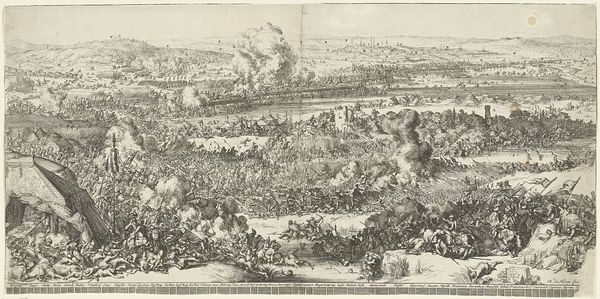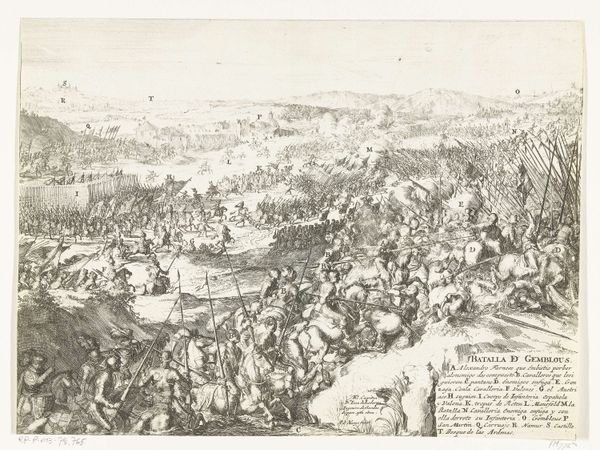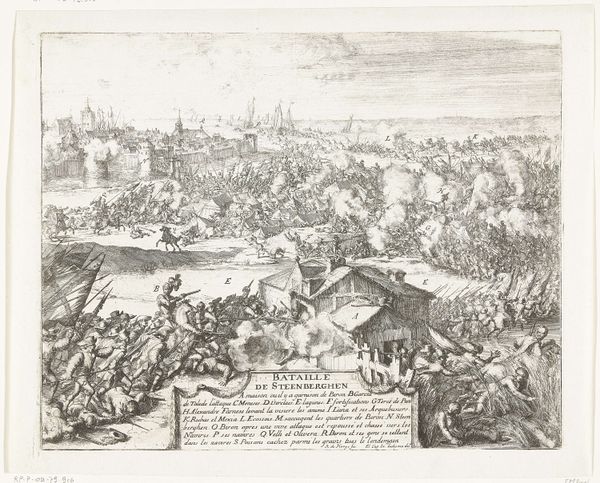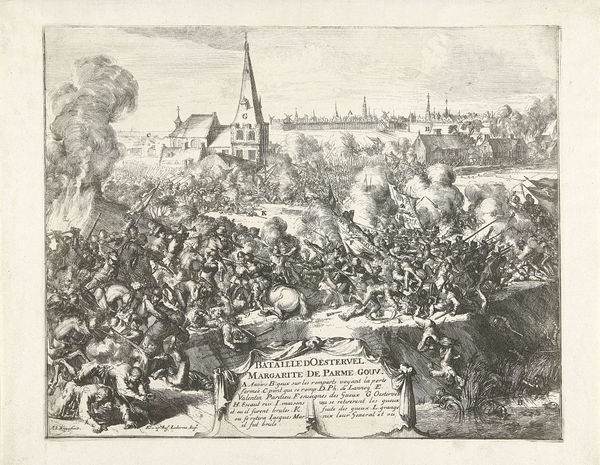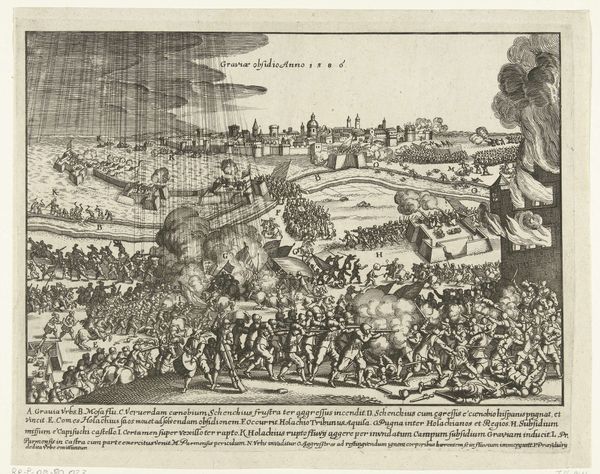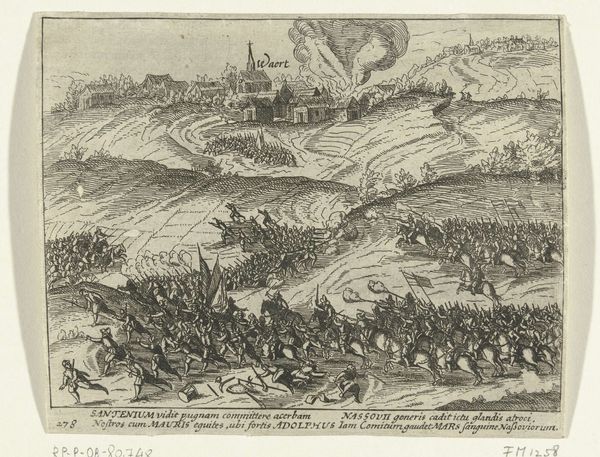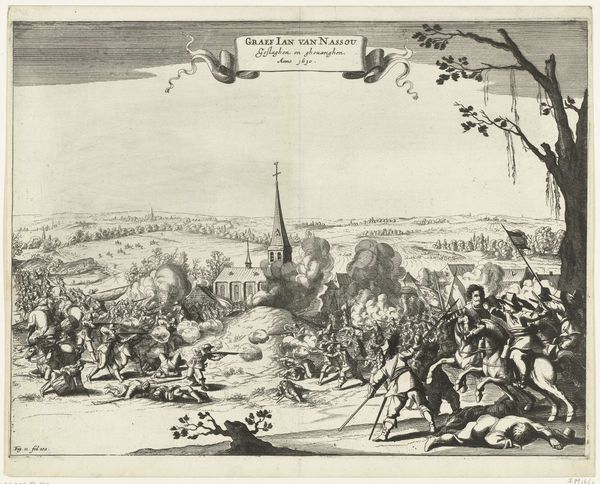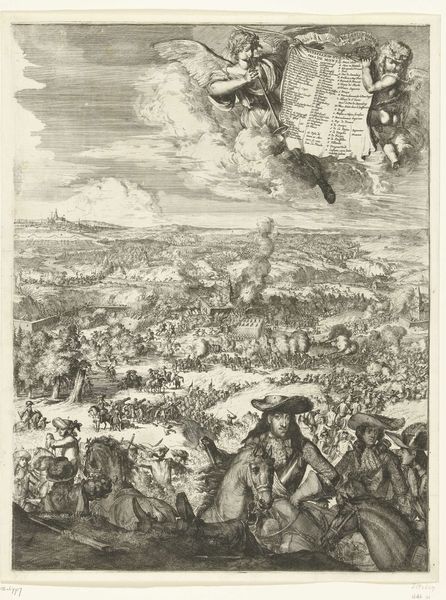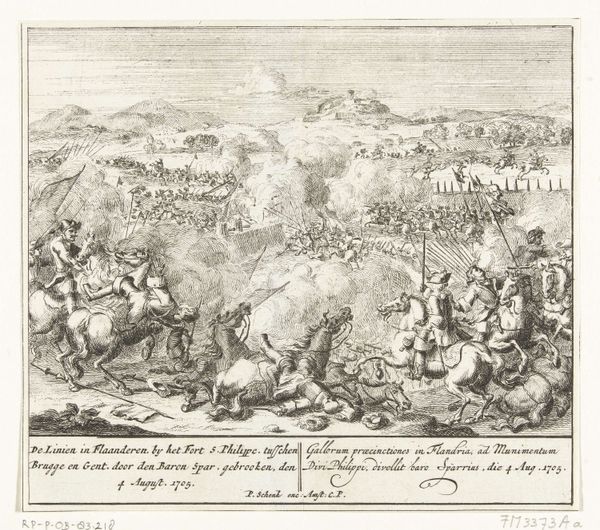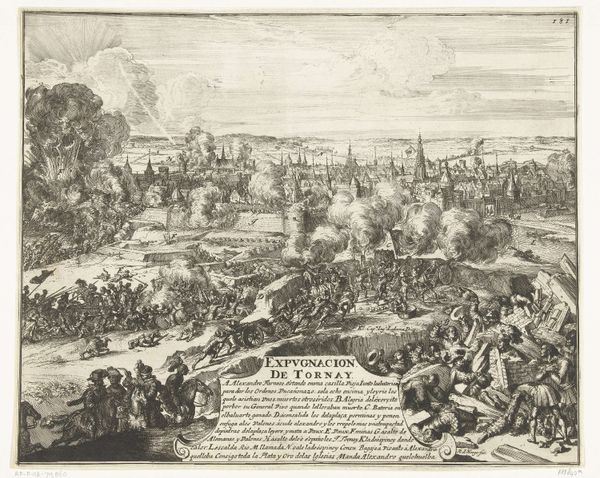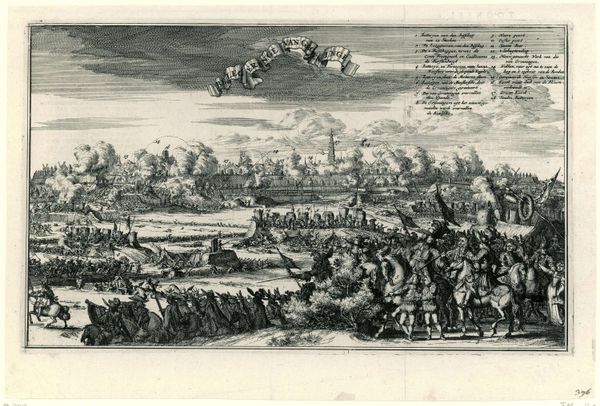
drawing, print, ink, engraving
#
drawing
#
baroque
#
pen drawing
# print
#
landscape
#
ink
#
pen work
#
cityscape
#
history-painting
#
engraving
Dimensions: height 550 mm, width 439 mm
Copyright: Rijks Museum: Open Domain
Editor: This is "Siege and Capture of Philippsburg (right sheet)" by Romeyn de Hooghe, created in 1676. It's an engraving with ink on paper, so detailed! It's a chaotic scene, but also feels meticulously planned. How should we interpret this work, given the artist and period? Curator: This print isn’t just a record of a military event; it's deeply entangled with Dutch political and cultural identity in the late 17th century. Think about the Golden Age, and then the shifts that followed. De Hooghe was employed to create powerful visual narratives that served specific political agendas. How do you think this image might be shaping public opinion about the war? Editor: I guess it glorifies the Dutch military, right? Makes it look like a strategically brilliant operation. Curator: Exactly, but let's dig deeper. Consider the perspective, almost bird’s-eye. How does this vantage point influence our understanding of power? And who do you think this artwork was created for, and how might that influence its meaning? Editor: A wealthy, nationalistic audience, maybe? People who wanted to feel proud of the Dutch Republic. So, the focus is on order and control rather than the actual messy reality of war. Curator: Precisely. And think about the baroque style, the dynamism. This adds an emotional layer, doesn't it? What does this tension between “truth” and propaganda tell us about the role of art during times of conflict? Editor: So, it’s not just about what we see in the image, but the social and political forces *behind* the image? That changes everything! I always thought of art history as appreciating pretty pictures. Curator: It's about seeing those pictures within the intricate web of history, power, and ideology. By understanding these contexts, we can uncover the biases, agendas, and cultural values embedded within seemingly straightforward depictions. That's what makes art history such a compelling lens for understanding the world. Editor: I’ll never look at a historical artwork the same way again. It’s not just an image; it’s a statement.
Comments
No comments
Be the first to comment and join the conversation on the ultimate creative platform.
